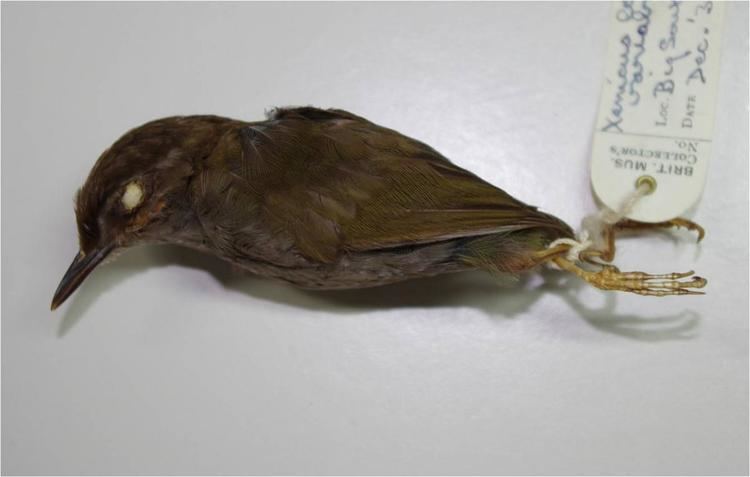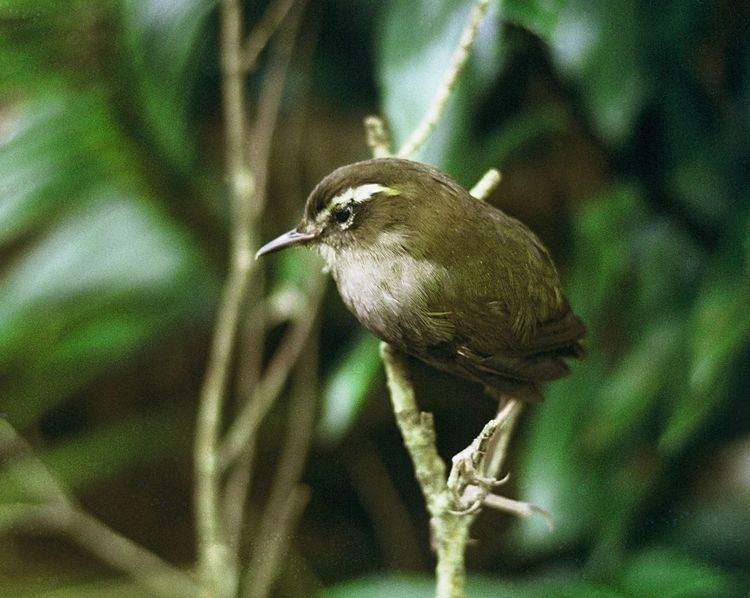Kingdom Animalia Order Passeriformes Family Acanthisittidae Scientific name Xenicus longipes Rank Species | Phylum Chordata Suborder Acanthisitti Genus Xenicus Higher classification Xenicus | |
 | ||
Similar Xenicus, Lyall's wren, Chatham bellbird | ||
The bushwren (Xenicus longipes), bush wren, or mātuhituhi in Maori, was a very small and almost flightless bird endemic to New Zealand.
Contents

Description

It grew to about 9 cm long and 16 g in weight. It fed mostly on invertebrates which it captured by running along the branches of trees. It nested on or near the ground.
Extinction

It was widespread throughout the main islands of the country until the late 19th century when mustelids were introduced and joined rats as invasive mammalian predators. The only authenticated reports of the North Island subspecies (X. l. stokesi) since 1900 were from the southern Rimutaka Range in 1918 and the Ureweras up to 1955, with probable sightings on June 13, 1949, near Lake Waikareiti, and several times in the first half of the 20th century in the Huiarau Range, and from Kapiti Island in 1911 (Edgar, 1949; St. Paul & McKenzie, 1977; Miskelly, 2003). Apparently, the last population lived in the area where Te Urewera National Park was established, ironically just around the time of its extinction.
The last authenticated reports of the South Island subspecies (X. l. longipes) were from Arthur's Pass in 1966 and Nelson Lakes National Park in 1968. There have been a few unsubstantiated reports since then from Fiordland and Nelson Lakes.
The third subspecies, X. l. variabilis or Stead's bushwren, was found on Stewart Island/Rakiura and nearby islands. It is known to have survived on Stewart Island until 1951 (Dawson, 1951) but was probably exterminated by feral cats. It lived on Kotiwhenua (Solomon) Island, being reasonably common, until the early 1960s. It survived on predator-free Big South Cape Island until black rats (R. rattus) invaded it in 1964. The New Zealand Wildlife Service attempted to save the species by relocating all the birds they could capture. They caught six birds and transferred them to Kaimohu Island where they did not survive and died in 1972.
